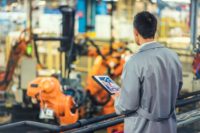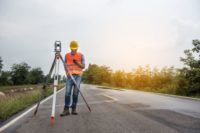Industry 5.0 introduces technologies that partner with workers to improve safety

Industry 4.0 revolutionized the way manufacturers design, create, and distribute their products. Its focus was on efficiency and productivity using the industrial internet of things (IIOT), machine-to-machine (M2M) communication, and automation. However, in early 2021 the European Commission released a report introducing Industry 5.0, focusing on the wellbeing of the worker within the production process.
The advent of mobile digital technologies aligns well with the human-centric approach of Industry 5.0. With the manufacturing industry ranking number three for industrial accidents, wearable technology, mobile sensors, and enhanced communication promise safer workplaces for the connected worker. Five applications available or being developed today are worthy of note.
The connected worker
A broad array of technologies exist today that enable workers to both access and upload data to streamline operations and maintenance, enhance safety, and increase productivity.
Safety zones can be enforced using personal monitoring and predictive technology, sounding alarms, or shutting down equipment if breached. Verification of maintenance processes and inventory levels can now occur without leaving the workplace through the use of a mobile computerized maintenance management system (CMMS).
Bundling technologies like AI, machine learning (ML), and computer vision (CV) enables workers to remain connected to a computerized operations or maintenance management system, providing and accepting data to support, guide, and protect human activity in the workplace.
Person - machine interface
Wearable technology has had its controversies regarding worker privacy and dignity. Yet, it potentially offers the holy grail of simultaneously increasing worker safety and productivity.
Designers are currently investigating safety vests with implanted sensors to be monitored by intra-plant GPS systems. Suitably modified stock pickers, forklifts, and other mobile or robotic equipment would monitor human locations.
Such systems will anticipate human interaction and other mobile equipment around corners or through doorways, modulating speed or ceasing movement altogether. Conversely, mobile equipment may safely travel at higher speeds with no human movement detected within a prescribed range, improving productivity.
Personal protection, security, and communication
Devices are now in production to enable employees to communicate hand-free from anywhere within a facility, at any time. Wireless personal badges were designed to respond to the rise in hospital violence, using speech recognition and voice commands to activate responses to an evolving situation. Emergency departments saw a 70% reduction in response time from the use of the devices.
Transferable to other industries, the badges support personal recognition through voice identification, streamlined communications to other team members, and activation of emergency response in emergencies. While designed around safety, the badges also promote more efficient and effective work practices, allowing immediate, identified, and targeted hands-free communication without leaving a workplace.
A US-based startup has developed a system for harsh environments such as space, oil fields, oceans, or heat. The device is clipped to workers' helmets and uses voice recognition and streaming video, optimized for low-bandwidth locations.
Location and status
While controversial, the ability to track employees' location, health, and status supports prompt and precise response in an accident or medical emergency. A Singapore-based company offers mobile, wearable sensors that bundle artificial intelligence, geo-fencing, access control, fall and impact detection, and GPS location with height coordinates. Compatible with big data, the technology claims to handle data volume, velocity, and variety, enabling the system to be scaled.
Similar technology has enabled businesses to respond to social distancing requirements that have arisen from the recent pandemic. Built on a visual engine, the system uses overhead sensors to track the distance between individuals, projecting a circle on the ground in green when distances are correct and red when breached. Pandemics aside, it's not too hard to envisage its use in manufacturing facilities to delineate safe distances from equipment or robotic machinery.
Personal thermal regulation
Wearable thermal regulation uses artificial intelligence to monitor personnel working in extremely cold conditions, either outside or in cool storage. Current practice is to wear multiple layers to maintain body warmth, restricting movement and risking injury while operating machinery.
A German manufacturer now offers a garment to monitor a worker's body temperature and, using artificial intelligence, recognizes body regions experiencing cold. It then applies heating to specific body areas using blood as a thermal vector to elevate the temperature of the coldest regions.
In summary
With the rapid rise of new and connected mobile technologies, gains to safety and productivity are constrained only by our imagination. Yet, with technology comes responsibility. As we move toward big data, greater connectivity, and personal monitoring, we must not lose sight of the data integrity and privacy ramifications.
Industry 5.0 is clear that worker safety and wellbeing is not just ensuring physical health in the workplace, it's also about people's mental health, autonomy, dignity, and privacy. The new technologies mustn't undermine the fundamental rights of the individual. If we start with the right philosophy, mobile technology and Industry 5.0 offer us an opportunity for safer and more productive workplaces thanks to the connected worker.
Looking for a reprint of this article?
From high-res PDFs to custom plaques, order your copy today!









